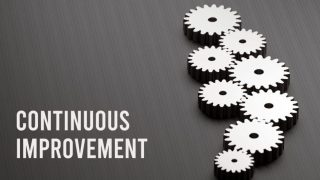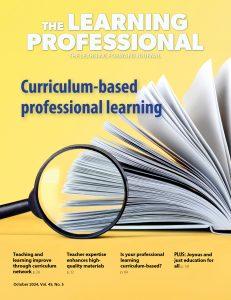Research has shown that effective collaboration results in higher levels of learning and performance by educators and students. Yet we also know that merely setting aside time and room for teams to work together does not guarantee these benefits.
So what are the essential elements of effective collaboration? Many of the answers lie in the culture of the organization responsible for supporting collective learning. Here are five things I have seen consistently in cultures that support effective collaboration.
- Clarity of purpose. Leaders support collaboration because they believe it is a key component of the vision for the school and/or school system. In many cases, that vision emphasizes a commitment to great teaching and learning for every student. As a result, these leaders are invested in collaborative professionalism to ensure learning for all adults and children. When leaders commit to authentic collaboration, they can promise all parents that the teacher responsible for their child is just one of many who are committed to the success of their children.
- Norms of collaboration. Norms describe the rules that a group is committed to following to ensure a respectful and productive working environment. Norms of school teams typically will address respect for the schedule (starting and ending on time); the speaker (respectful listening; no interrupting); and the agenda (limited birdwalking and hijacking). Other norms may address roles and responsibilities of leaders as well as confidentiality, respect, and trust.
- Resource allocation. Teams need adequate time to accomplish the tasks they undertake and comfortable, safe spaces in which to do them. They need to trust that they will be able to get additional help if they require external expertise or other resources. Not having to worry about fighting for resources enables teams to focus on what is most important to them.
- Facilitation and support. Skillful facilitation can accelerate progress within teams. Knowledgeable facilitators and team members ensure that members engage in work that will lead to desired outcomes. Such facilitation ensures that teams have the data and evidence required to inform their decisions, the designs essential to guide their learning, and the support required to implement changes in practice.
- Accountability for results. A commitment to better outcomes is a foundation for collaboration. In education, when few decisions have exact answers, having multiple perspectives and areas of expertise contributes to the best decisions and best outcomes. Teachers are advocates for collaboration because, no matter what accountability system guides their states and school systems, they are accountable to their students and their families.
To what degree do you see these elements represented in your teams, PLCs, school leadership councils, or task forces? If your groups are floundering, are any of these elements missing? If they are successful, which are most present and what else have you seen contributing to their impact?
If you are familiar with Learning Forward’s Standards for Professional Learning, I challenge you to find all seven standards represented in the five elements, once again highlighting that better outcomes for students and staff require attention to standards-based professional learning.
This column appears in the December 2017 issue of The Learning Professional.
About the author
Stephanie Hirsh is executive director of Learning Forward.







